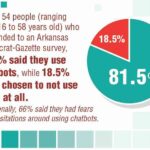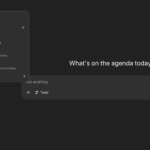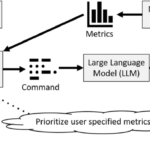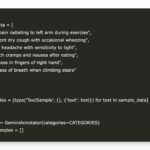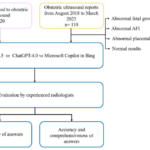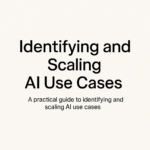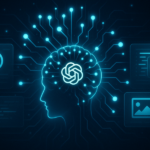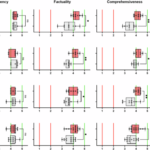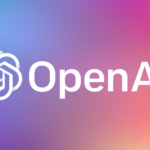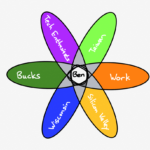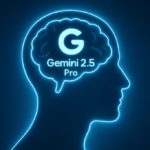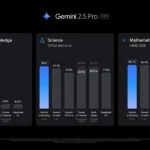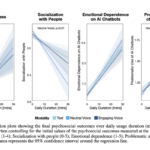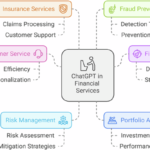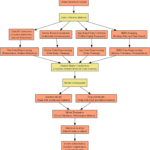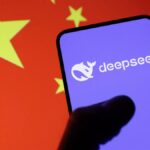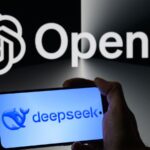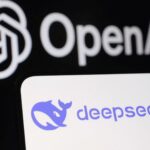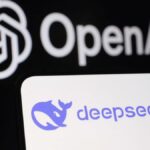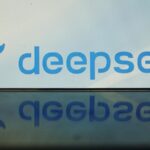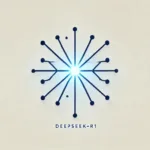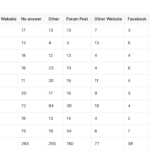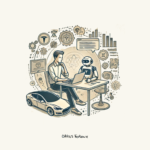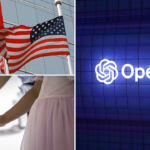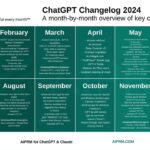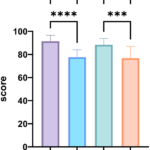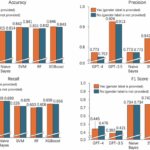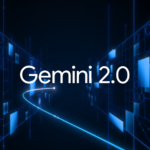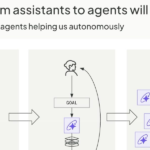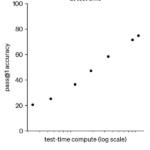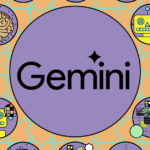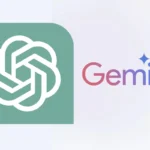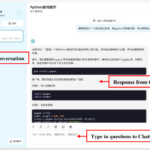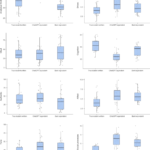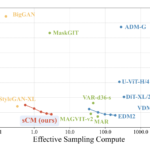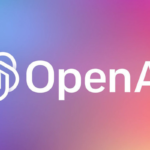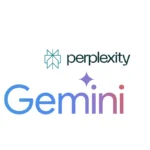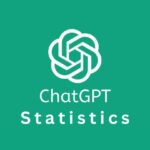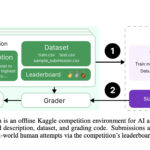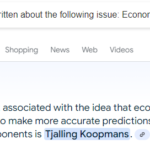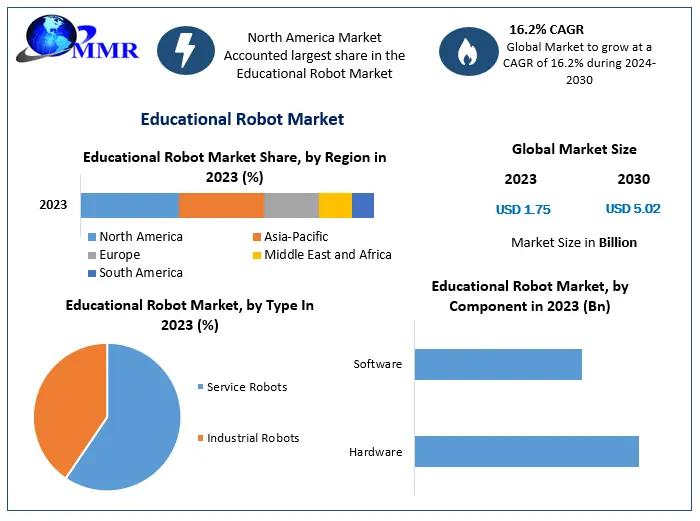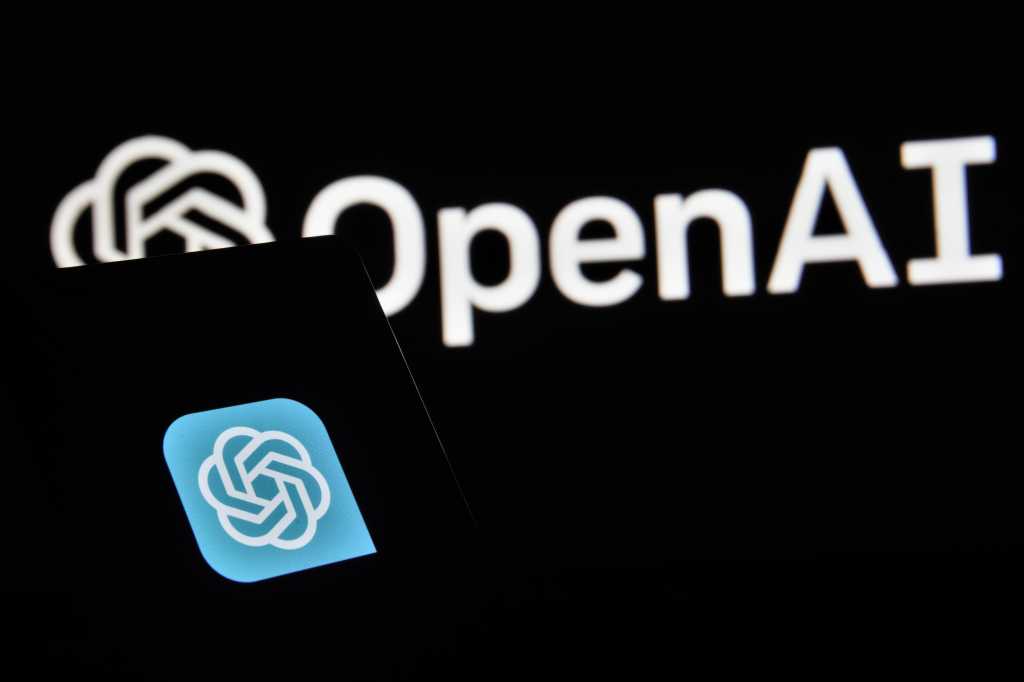Noticias
ranking top Internet services in 2024

Since the late 1990s, millions have relied on the Internet for searching, communicating, shopping, and working, though 2.6 billion people (about 31% of the global population) still lack Internet access. Over the years, use of the Internet has evolved from email and static sites to social media, streaming, e-commerce, cloud tools, and more recently AI chatbots, reflecting its constant adaptation to users’ needs. This post explores how people interacted online in 2024, based on Cloudflare’s observations and a review of the year’s DNS trends.
Building on similar reports we’ve done over the past several years, we have compiled a ranking of the top Internet properties of 2024, with the same categories included in 2023, including Generative AI. In addition to our overall ranking, we chose 9 categories to focus on:
-
Generative AI
-
Social Media
-
Ecommerce
-
Video Streaming
-
News
-
Messaging
-
Metaverse & Gaming
-
Financial Services
-
Cryptocurrency Services
As we have done since 2022, our analysis uses anonymized DNS query data from our 1.1.1.1 public DNS resolver, used by millions globally. We aggregate domains for each service (e.g., twitter.com, t.co, and x.com for X) and identify the sites that provide services to humans, thus excluding technical domains like root-servers.net. Rankings reflect relative popularity within categories, not absolute traffic. Therefore, a drop in rank doesn’t always indicate less traffic to a specific Internet service — it may simply reflect increased competition from other services, leading to a change in rank.
This part of the 2024 Cloudflare Radar Year in Review highlights shifts in Internet services, with rising platforms like Temu, GitHub Copilot, and WeChat reflecting changing user preferences. ChatGPT (OpenAI) also played a more prominent role in the generative AI space and in our Overall ranking, nearly reaching the Top 50. Major events like the Paris Olympics and US elections influenced rankings as well, boosting Olympics-related sites and news platforms like CNN and Fox News.
Keep reading for a detailed look at the evolution of trends throughout the year. For more, visit our 2024 Cloudflare Radar Year in Review microsite. Along with the lists of most popular Internet services, the Year in Review microsite and its associated blog post explore a number of additional metrics.
Google is again #1. Facebook, Apple and TikTok follow
Since 2021, we’ve started our review of rankings with an Overall Top 10 list, showcasing the most popular Internet services globally based on DNS traffic from our 1.1.1.1 resolver. Unsurprisingly, Google (including services like Google Maps and Google Calendar) remained the #1 Internet service in 2024. Since introducing our ranking method two years ago, no other service has come close to challenging Google’s top spot. It’s important to note that Apple and Microsoft are similar to Google in that their main domains (apple.com or microsoft.com) are used for many different services. We include other services separately, such as Outlook or iCloud, which use their own specific domains.
Top 10 most popular Internet services in 2024, overall
-
Google
-
Facebook
-
Apple
-
TikTok
-
Amazon Web Services
-
Microsoft
-
Instagram
-
YouTube
-
Amazon
-
WhatsApp
Beyond Google, Facebook consistently held the #2 spot throughout 2024. Last year, it competed with Apple for that position. Apple, which uses domains like apple.com for services related to its software and devices, was generally #3. However, TikTok challenged that position on several days since late August. Amazon Web Services (AWS), differentiated from Amazon by domains like amazonaws.com, performed better this year compared to 2023. It held the #5 spot but often traded places with Microsoft during the year.
Instagram also rose in the rankings. It was around #8 in 2023 and steadily improved. Now, it holds the #7 spot, ahead of YouTube.
Amazon remained at #9 for most of the year, the same as in 2023. WhatsApp, owned by Meta, appeared in the Top 10 for the first time, taking the #10 spot.
Close to the Top 10 were Apple’s iCloud, Netflix (which performs better on weekends), and Microsoft’s Outlook.
In the chart below, you can follow the evolution of the top Internet services in our Overall ranking throughout the year.
In 2022, X (then known as Twitter) ranked as high as #10 in our overall ranking and was close to Instagram. It never reached the top 10 in 2023, and in 2024, X dropped further, to #14 or #15. More on X’s performance in the Social Media category below.
Ready to face the Generative AI era?
Generative AI gained global attention in late 2022 with the launch of ChatGPT, and became a global phenomenon during 2023. By 2024, ChatGPT (OpenAI) continues to be by far the most popular service in this category, which includes chatbots, coding bots, and more. Other generative AI services had more stable rankings compared to 2023.
Top 10 Generative AI services in 2024
-
ChatGPT (OpenAI)
-
Character.AI
-
Codeium
-
QuillBot
-
Claude (Anthropic)
-
Perplexity
-
GitHub Copilot
-
Wordtune
-
Poe
-
Tabnine
Significant changes occurred below ChatGPT’s first place ranking throughout the year. Character.AI, an AI-driven chatbot platform, maintained a strong #2 position, staying ahead of Codeium, a code-generation AI tool that has improved its position since June, and Quillbot, an AI writing and paraphrasing tool.
Claude, the AI chatbot from Anthropic, rose in the rankings, particularly after March 4, when the new model, Claude 3, was introduced, and again later in May when it became available in Europe. It reached #5 in June. Perplexity, an AI-driven search and Q&A platform, started the year outside the Top 10 but ended close to Claude. It surpassed Claude for the first time on November 6, 2024, the day after the U.S. elections, reaching #6.
This next chart shows movement among the Generative AI services that were more popular later in the year.
GitHub Copilot’s rise to the Top 10
Several new players entered the Top 10 AI rankings in 2024, showing strong growth. GitHub Copilot, an AI-powered coding assistant, experienced the fastest rise, entering the Top 10 in September (after reaching the Top 20 in June) and staying mostly between #5 and #3 by November, as the next chart shows. Similarly, Suno AI, an AI-powered audio and music generation platform, entered the Top 10 in April, briefly dropped out, but stabilized between #6 and #10 after October — in November, it ranked #6 on weekends.
Some platforms lost ground in the rankings. Wordtune, an AI writing assistant, peaked at #4 during mid-year but declined afterward. Tabnine, another AI-powered coding assistant, held the #5 spot for months but slipped after July. In contrast, Sider AI, a coding assistant, entered the Top 20 in March and finished the year around #12. Poe, an AI chatbot platform, ranked #5 in 2023 and between #5 and #6 before June, but ended 2024 moving around #10, performing better during weekends.
Google Gemini, Google’s AI assistant and model, performed better on weekdays and started the year ranking between #7 and #10, but dropped out of the Top 10 after July as newer AI platforms gained momentum. Hugging Face, an open-source AI and machine learning platform, mostly fluctuated between #7 and #9 during the year, peaking at #4 on August 18 around the time several models were updated, and and as it reached its milestone of 5 million users. However, it fell out of the Top 10 by September.
Midjourney, an AI-powered platform for generating images, performed well until June, when it was close to the Top 10. Additionally, the OpenAI API ranked #18 in the Generative AI category on May 14-15, coinciding with OpenAI’s announcement of GPT-4o availability, including in the API.
ChatGPT’s growth to the Top 50 of our Overall category
Notable trends that we observed when looking at trends for Generative AI services within our larger Overall ranking include:
-
ChatGPT continued its growth in 2024, similar to 2023. In early 2023, it ranked around #200 and ended the year near the top 100. In 2024, it started close to the top 100, reached the top 60 in May with the release of the 4o model, and has been near the top 50 since September, aligning with the return of workers and students to their routines. It ranks higher on weekdays, averaging #56, and drops on weekends.
-
Comparing ChatGPT with other known and non-AI related websites, by late November, ChatGPT ranked ahead of Weather.com, Temu, eBay, Telegram, Google Calendar, and Prime Video, but trailed Disney Plus
Character.ai also showed a clear growth trend in our Overall ranking, from outside the top 200 earlier in the year, to above #180 after July, performing better in August, reaching as high as #161. The AI-driven chatbot platform performed better on weekends than on weekdays, the opposite of ChatGPT.
According to Kepios, there are an estimated 5.22 billion social media users worldwide in 2024 (up from 4.95 billion last year), representing 63.8% of the global population. Social media continues to play a major role in daily life, serving as a key platform for communication, information, and attention.
Once again, social media giants like Facebook, TikTok, and Instagram dominate, ranking among the top 10 most popular Internet services overall.
Top 10 Social Media services in 2024
-
Facebook
-
TikTok
-
Instagram
-
X
-
Snapchat
-
LinkedIn
-
Discord
-
Kwai
-
Pinterest
-
Reddit
In the Social Media category rankings, the top seven remain unchanged from last year. However, there are notable developments in this category. In 2022, X briefly challenged Instagram for the #3 spot during a few days. Since 2023, X has held a solid #4 position, with Snapchat closing in and reaching #4 for the first time on several days in September and October.
LinkedIn stayed steady at #6, followed by Discord. Kwai, a Chinese video app popular in Brazil (with 60 million reported users) and other countries (a reported ), rose from #10 last year to #8. Further down the list, Pinterest kept its #9 rank, while Reddit, previously #8 in 2023, dropped to #10 this year, but peaked at #7 on November 26, just before Black Friday and Thanksgiving in the US. Here’s the Social Media Top 10 chart for 2024:
Our global ranking also highlights several non-Western platforms in the Top 20. These include Douyin (#11), the Chinese version of TikTok; VK (#12), often referred to as the Russian Facebook; and TikTok rivals popular in Southeast Asia SnackVideo (#13) by Chinese Kuaishou (that also owns Kwai). OnlyFans appeared consistently in the Top 20 starting in September, ranking around #18 and surpassing Tumblr by late November.
The #18 spot was briefly held by X alternative Threads (by Instagram) in late September and by Bluesky starting November 18. Mastodon-related servers reached as high as #19 for several days since late August. Here’s a look at X (on top) and its alternatives in this category:
Alternatives to X: Bluesky, Threads, and Mastodon
Let’s move beyond the Social Media category to see how these platforms performed in our Overall ranking, where bigger shifts between services are evident.
As we’ve seen, Threads, Bluesky, and Mastodon (via an aggregation of popular servers) didn’t break into the Top 10 of the Social Media category. However, in the Overall ranking, Mastodon servers, bundled together, consistently ranked between #208 and #248, performing better on weekends.
Bluesky entered the Top 250 in September 2024, and gained additional attention after the US elections. It rose sharply after November 14, peaking at #193 on November 20, and has since stabilized around #220.
Threads entered the Top 250 in August 2024, peaking at #183 on September 24 before dropping out in October. In 2023, Threads peaked at #227 in early July but fell out of the Top 250 by late August. It’s worth noting that Threads also uses Instagram’s cdninstagram.com for images and videos, which may influence Threads position in our DNS rankings (that said, Instagram wasn’t impacted by Threads appearance in our rankings).
Here are some other trends we observed among social media apps, and how they did in our Overall ranking:
-
Instagram’s best day (#6 in the Overall ranking) was August 5, 2024, coinciding with the week the app was banned in Turkey.
-
X’s best day of the year in our ranking was April 14, when it reached #12. This coincided with Arsenal losing the top position in the English football/soccer Premier League (the most-watched sports league in the world) to Manchester City, which went on to win its fourth title in a row. Last year, we noted how football/soccer in England impacted X’s ranking. X also reached #13 on August 9 and 10, during the final weekend of the Paris 2024 Olympics.
-
X performed better on weekdays, while LinkedIn ranked higher between Mondays and Wednesdays. Snapchat and Discord performed better on weekends.
-
Reddit consistently stayed in our Top 50 in 2024, showing growth from around #45 to #40 by November, with a peak at #38 on November 26. It performed better between Mondays and Wednesdays.
-
Quora displayed a downward trend in our ranking, dropping from around #140 to #160. It performed better between Mondays and Wednesdays.
-
Tinder, which performs better on Sundays, started the year around #150 but eventually dropped below #160.
-
Tumblr followed a similar pattern, dropping out of the Top 200, where it was in early 2024, to outside the ranking entirely since September. Tumblr performed better on weekends.
-
OnlyFans showed growth in our Overall ranking, sitting around the Top 220 with a peak at #213 on December 1. It performed better on weekends.
E-commerce: Temu means growth
The importance of e-commerce continues to grow, as highlighted in our recent Cyber Week 2024 blog post. Amazon leads the category, followed by Taobao, the Chinese marketplace, holding a steady #2 spot as it also did in 2023. New to #3 is AliExpress, the global online retail giant from China.
Top 10 E-commerce services in 2024
-
Amazon
-
Taobao
-
AliExpress
-
Shopify
-
Temu
-
Alibaba
-
eBay
-
Shein
-
Mercado Libre
-
Wildberries (RU)
Compared to 2023, eBay lost its #3 spot globally and dropped down to #7, despite starting 2024 at #3 for several days. AliExpress claimed #3, followed by Shopify (#4), the Canadian platform hosting numerous online stores, and Temu (#5). Temu, the low-cost, fast-fashion marketplace launched in the US in September 2022, ended 2023 at #7 but rose to #5 in 2024, occasionally reaching #4 since August. Alibaba dropped to #6 in September.
Shein, the Chinese fast-fashion brand, continued its growth and overtook Mercado Libre (#8) in November. A surprise this year was Wildberries, often called Russia’s “Amazon,” that has been expanding to several neighboring countries (including some in Europe). It climbed to #10 in September, surpassing OLX (which held #10 for several months), Rakuten, and Lazada.
The Black Friday overall effect
Looking at how e-commerce sites performed in our Overall ranking, we observed the following trends:
-
Amazon fluctuated between #9 and #10 after October, returning to #9 on November 30 and December 1, during the Black Friday weekend. It often performed better on weekends.
-
Shopify’s best day of the year was Black Friday, November 29, when it reached #55. The global e-commerce platform performed better during weekdays.
-
Temu, known for low-cost products, started 2024 outside the Top 100 but climbed into the Top 70 by year-end. It performed best in late October and early November, peaking at #63, with a Black Friday spike to #65.
-
Shein, the Chinese fast-fashion brand, showed growth, nearing the Top 100 in early 2024 before dropping to the Top 140 between June and October. It rebounded in November, peaking at #83 on Black Friday. A similar trend was observed in 2023, when it ended the year around the Top 120. Here’s the comparison between recent players Temu and Shein:
-
eBay consistently ranked between #72 and #80, peaking at #62 on October 5-6 and again in late November, just before Black Friday. It often performed better on weekends.
-
Mercado Libre, the Latin American marketplace, had its best day on Black Friday, November 29, reaching #100.
-
Adidas entered the Top 250, ranking #232 on Black Friday, November 29.
-
Target performed well in November, peaking at #133 on November 27, the day before Thanksgiving in the US, and at #127 on December 1. It often performed better on Sundays.
-
Walmart improved its performance from September onward, with its best days on November 25-26, reaching #150.
-
Ikea, the Swedish furniture retailer, peaked at #247 on June 29.
Video streaming: YouTube and Netflix remain uncontested leaders
The relevance of video streaming platforms shows no signs of fading. In 2024, the Top 3 rankings stayed unchanged from 2023, with YouTube firmly holding the #1 spot, followed by Netflix. Among paid streaming services, Netflix leads, trailed by Disney Plus and Amazon Prime Video. Other paid streaming services are outside the Top 10, including, in ranked order: HBO/Max, Hulu, Peacock, and Paramount Plus.
Top 10 — Video streaming services 2024
-
YouTube
-
Netflix
-
Twitch
-
Roku
-
Disney Plus
-
Amazon Prime Video
-
Vimeo
-
Plex.TV
-
Pluto TV
-
Bigo Live
Twitch, a live-streaming platform for gaming, kept the #3 spot, as it did in 2023 and 2022. Roku, a digital media player that also offers streaming services, ranked #4, maintaining its position from last year. Similarly, Disney Plus (#5) and Amazon Prime Video (#6) held their spots, while Hulu dropped out of the Top 10.
The creative video platform Vimeo showed clear popularity growth since May, followed by recent players like Plex TV, a media platform with streaming that performed better starting in October, and Pluto TV, a free ad-supported streaming service that also showed growth throughout the year. Bigo Live, a live-streaming social platform, entered the Top 10 rankings in May.
Next, the Top 10 overtime perspective:
Throughout the year, Disney Plus occasionally challenged Roku, especially on weekends, a trend similar to what was observed in 2023.
Looking at how video streaming services performed in our Overall ranking, we found:
-
Netflix consistently ranked #12 on most weekends, particularly Sundays, through late May and resumed the same trend after August. Netflix, Disney Plus, Prime Video, and HBO/Max were more popular on weekends, especially Sundays.
-
Disney Plus ranged between #50 and #60, with a strong start to the year and a spike to #51 on September 22, coinciding with the premiere of the new Marvel show Agatha All Along.
-
Prime Video had its best day in the rankings on May 25, at #56, the day the movie Bombshell with Nicole Kidman premiered on the platform.
-
HBO/Max was consistently around the Top 100 until August. but dropped out after October.
-
Peacock had an inconsistent presence in the Top 250 but reappeared in late July during the Paris 2024 Olympics, reaching #176 on July 28. That was one of the busiest days for Olympic events, as detailed in our blog post on the event.
-
Paramount Plus was mostly outside the Top 250 this year but peaked at #216 on February 11, the day of the Super Bowl, which the platform streamed.
The News: Globo and BBC global perspectives
News organizations are vital for keeping the public informed, especially during crises. With that in mind, this ranking of news services, some of which are well-established news outlets while others are news aggregators, also highlights a few newsworthy trends.
Top 10 News services in 2024
-
Globo
-
BBC
-
NY Times
-
CNN
-
Fox News
-
Google News
-
Yahoo Finance
-
Daily Mail
-
RT
-
NewsBreak
This year’s rankings in the news category mirrored 2023 at the top. Globo, the Brazilian media giant — one of the largest in Latin America and globally — encompassing radio, TV, newspapers, and magazines, stayed #1, followed by the British BBC at #2, that operates globally and in 42 languages.
The New York Times rose to #3 this year (it was #5 in 2023), overtaking CNN (#4) and Fox News (#5), which dropped from its position at #3 in 2023 and this year came behind CNN.
Several prominent outlets, such as the Washington Post, The Guardian, NPR, and the Wall Street Journal, fell out of the Top 10 this year. These outlets had higher rankings in late 2023 following the start of the Hamas-Israel conflict on October 7. News aggregators gained prominence, with Google News (#6) and also Yahoo Finance (#7), focused on financial news (and that came in front of Yahoo News), and NewsBreak (#10), a US-based local news app, entering the Top 10.
The British Daily Mail, which has also expanded its focus to the US and Australia, ranked #8, followed by RT, the Russian news TV network with a global presence. RT launched its Brazil/Portuguese version in late 2023 and was recently highlighted in a report and an alert from the US Department of State regarding its global operations.
The US elections impacted rankings. CNN climbed to #2 on November 5, election day, and reached #1 on November 6, while Fox News peaked at #3. NBC News also improved, reaching #11 on November 5 and #7 the following day. Associated Press ranked #8 on November 5 as well. Here’s the News ranking:
US elections, attacks and protests
Notable news trends we identified in our larger Overall ranking include:
-
As we’ve seen in the News category, the US elections on November 5, 2024, caused CNN, Fox News, and others to jump in our rankings. This trend was also evident in the Overall ranking for the following media outlets, listed by performance. November 6 was the best day of 2024 for each:
-
CNN: #105 on November 5; #72 on November 6
-
Fox News: #153 on November 5; #92 on November 6
-
BBC: #115 on November 5, and #97 on November 6
-
NY Times: #149 on November 5; #98 on November 6
-
NBC News: #160 on November 6
-
Associated Press: #166 on November 6
-
Google News: #250 on November 5; #228 on November 6
-
Wall Street Journal: #241 on November 6
-
Washington Post: #245 on November 6
-
In the next chart we show rankings for CNN, Fox News, the BBC, and NY Times:
-
Brazil made headlines in late February when thousands of Bolsonaro supporters protested to defend the former president against investigations. During this period, Globo moved up the rankings, reaching #60 on February 24-25, 2024.
-
WP, the news aggregator from Poland, had its best day on July 26 (#188), coinciding with Polish lawmakers voting to allow security forces to use lethal weapons with “impunity”, particularly at the tense border with Belarus. WP peaked again on November 6 (#180), the day after the US elections, when the result of the election was mentioned in Poland’s parliament. Its third and final peak was on Black Friday, November 29, again at #180.
-
Rambler, the Russian news aggregator, peaked at #218 on February 23, 2024, the day after the Moscow concert hall attack and the same day Vladimir Putin addressed the nation.
Messaging: WhatsApp rules & Telegram rises
Messaging remains relevant, especially for specific communication purposes. Apple’s iMessage is excluded from this category because it lacks a unique domain name for traffic analysis. With that in mind, WhatsApp retained its position as the top messaging service in 2024, consistent with 2023 and 2022.
Top Messaging services in 2024
-
WhatsApp
-
QQ
-
Telegram
-
Viber
-
WeChat
-
Signal
-
LINE
-
KakaoTalk
-
eitaa.com
-
Facebook Messenger
Following WhatsApp at #2 is, for the second year in a row, the Chinese service QQ, also known as Tencent QQ, which includes games and mobile payments and is popular in Asia. Telegram, widely used in Eastern Europe and Asia, took the #3 spot from Viber in June. Viber remains popular in Eastern Europe, Asia, and the Middle East.
WeChat rose this year, securing #5 in October and surpassing Signal, which held that position for most of the year but dropped to #6 (the same position in which it ended 2023). LINE from Japan ranked #7, while new entries to the Top 10 included South Korea’s KakaoTalk (#8) and Iran’s eitaa.com (#9), a messaging application, designed for both mobile and desktop platforms, that is popular in Iran and among the Farsi (Persian) language diaspora.
Facebook Messenger rounded out the Top 10 at #10.
Here are other messaging trends from our Overall ranking:
-
WhatsApp, as noted, performed better this year, growing in popularity since late July, stabilizing at #9 by mid-October, and performing better during weekdays.
-
Telegram’s best days were between July 16-18, during developments in the Ukraine war, including the Russian Black Sea Fleet leaving Crimea. Telegram is widely used by thousands of Russian ‘war correspondents,’ as recently reported.
-
Eitaa, the Iranian cloud-based messaging app, peaked at #185 in our Overall ranking on April 14, 2024, the day of Iranian strikes against Israel, which we covered in a blog post on Internet trends.
-
WeChat spiked in our Overall ranking (#116) on July 30, 2024, coinciding with Chinese leaders pledging to tilt stimulus efforts towards consumers.
Gaming and metaverse both involve immersing players in other worlds. Leaving concepts aside, we’ve grouped gaming and the metaverse into the same category since 2022. Roblox dominated this category again in 2024, retaining its top spot, followed by Microsoft’s Xbox at #2. Epic Games, the creator of Fortnite, ranked third.
Top 10 Metaverse & Gaming services in 2024
-
Roblox
-
Xbox/Xbox Live
-
Epic Games/Fortnite
-
Steam
-
PlayStation
-
Electronic Arts
-
Blizzard
-
Riot Games/League of Legends
-
Minecraft
-
Garena
Xbox/Xbox Live held #2 consistently, but Epic Games/Fortnite contested the position earlier in the year and again in November. Steam was a surprise this year, jumping to #4, ahead of PlayStation. It even rose to #2 in late March and early April, coinciding with the launch of a new demo. Other platforms on the rise included Electronic Arts, Blizzard, and Riot Games/League of Legends.
Minecraft made the Top 10 at #9, performing best on July 5, 6, and 10, when it reached #7. Garena, the Singaporean game developer and publisher, entered the Top 10 for the first time. Oculus, Meta’s VR headset and metaverse service, dropped out of the Top 10 to #11, after ending 2023 at #5. It performed better earlier in the year (until April) and in late November.
Here’s the top chart across 2024:
Here are other metaverse and gaming trends from our Overall ranking:
-
Roblox’s best day in 2024 was January 21, when it reached #20. The platform performed better on weekends, especially Sundays, similar to other popular gaming platforms like Xbox/Xbox Live, Epic Games/Fortnite, Steam, and PlayStation.
-
Epic Games/Fortnite’s best day was January 1, 2024.
-
Xbox/Xbox Live (#37) and PlayStation (#43) had their best day on November 2, 2024, the day before the launch of the new version of the classic game Aero the Acro-Bat: Rascal Rival Revenge.
-
Steam’s best day was August 24, 2024, during the week of Gamescom 2024 in Germany. Several new games were released that week, including Tactical Breach Wizards and Dustborn.
-
Minecraft, celebrating its 15th anniversary in May 2024, had its best days on June 15 (#90), following the release of the Tricky Trials game update by Mojang Studios, and August 17 (#90), coinciding with the release of Minecraft: Java Edition Snapshot 24w33a.
Financial services: Stripe keeps lead, Black Friday impact
Financial services cover everything from traditional banking to cryptocurrencies and tax tools. Stripe, the Irish-American payment platform, kept its #1 spot for the second year, after overtaking PayPal in this category in 2023.
Top 10 Financial Services in 2024
-
Stripe
-
TradingView
-
Alipay
-
PayPal
-
Nubank (BR)
-
Binance
-
Coinbase
-
Banco do Brasil
-
Bradesco Bank
-
Itau
PayPal spent only a few days at #2 and a few others at #3 this year, but ultimately dropped to #4. TradingView, a platform specializing in tools for traders and investors, climbed to #2, followed by AliPay, the Chinese mobile and online payment platform, which secured #3.
Nubank, the Brazilian neobank (only online) and considered to be the most valuable, one of the biggest Latin America financial groups and the world’s biggest digital bank, entered the Top 10 at #5, while Binance rose to #6 (up from #8 last year). Binance also peaked at #3 on November 12-13, following the US elections, as Bitcoin reached new highs. In the crypto space, Coinbase joined the Top 10 for the first time.
Brazil’s growth in online banking, digital banks, and payments in Latin America has driven traditional banks to expand their digital presence. In 2024, Banco do Brasil, Bradesco, and Itaú performed well and rose into the Top 10, moving more than ever to the online space including in partnership with each other (as detailed in these two (1), (2) articles in Portuguese).
And here’s the crypto perspective in this Financial services category:
Next, we highlight other financial services trends from our Overall ranking:
-
Stripe’s best days were just before Black Friday, on November 18-19 and November 25, reaching #81 during those days. Stripe performed better on weekends and maintained consistent rankings throughout the year.
-
PayPal ranked higher around Black Friday week, peaking at #89 on November 21 and on Black Friday, November 29.
-
Brazilian bank Nubank performed best a few days before Carnival in Brazil (February 10-14), reaching #87 on February 1 and 3 and #92 on February 10. It also ranked well on Black Friday, November 29, peaking at #90.
Crypto: Binance is back (and the impact of US elections)
In addition to our Financial Services category, we evaluated cryptocurrency-related services specifically. Despite a few crashes over recent years, the crypto sector continued to evolve in 2024, experiencing a late-year boom, as we explore below. Binance and Coinbase retained the top two spots, while OKX climbed to #3 this year.
Top 10 Cryptocurrency services in 2024
-
Binance
-
Coinbase
-
OKX
-
2miners.com
-
CoinMarketCap
-
Coingecko
-
Bybit
-
Exodus
-
Tonkeeper
-
NiceHash
CoinGecko, a cryptocurrency data platform, dropped to #6, making way for OKX in late August, while new entrant 2miners.com rose to #4. CoinMarketCap ranked #5, followed by several dynamic new entrants in the Top 10:
-
Bybit (#7): A cryptocurrency exchange offering spot and derivatives trading.
-
Exodus (#8): A user-friendly, multi-asset cryptocurrency wallet.
-
Tonkeeper (#9): A secure wallet for managing Toncoin and related assets.
NiceHash, a platform connecting cryptocurrency miners and buyers, performed better in 2023, but dropped from #5 to #10 this year.
The US elections also had an apparent effect on the Overall ranking:
-
Binance entered the Top 100 for the first time on September 26, when Bitcoin surged past $65,000, driven by positive US employment data and China’s announcement of economic stimulus measures. It peaked at #97 on November 13, following the US elections and Donald Trump’s victory, as Bitcoin’s price surpassed $90,000 for the first time.
-
Coinbase’s best day was November 21, reaching #131, as Bitcoin approached $100,000 (which it surpassed on December 4, although our ranking only covers up to December 1).
-
OKX peaked at #149 on November 22, and CoinMarketCap reached #176 on November 23.
-
CoinGecko’s best day was November 11, the week following the US elections, when it climbed to #137.
Other overall trends: Olympics, Tesla, GitHub, and more
Outside the categories we reviewed as part of the Year in Review, several notable trends emerged in our Overall ranking:
-
The Paris 2024 Summer Olympics (July 26–August 11, 2024) appeared in our Top 250 Overall ranking, with Olympics-related sites debuting on July 27 (#195), the first full day of events. The peak was on July 30 (#177), driven by Léon Marchand’s swimming performances and the US women’s artistic gymnastics medal, as detailed in our Olympics blog post. The final day in the Top 250 was August 11 (#217).
-
Spotify ranked between #17 and #18 this year, performing best in October, spending most of the month at #17. However, as our list ends on December 1, we are not tracking the impact of the recently launched Spotify Wrapped.
-
Tesla entered the Top 250 after October. Its best day was October 12 (#245), following the Cybercab robotaxi reveal. It also ranked higher on November 17 (#246), after a post-US elections stock rally.
-
GitHub’s best day was November 8 (#31), coinciding with its announcement of enhanced security protocols, including mandatory two-factor authentication (2FA) for organizations.
-
NBA appeared in the Top 250 until early March, with its best day on February 4, during these games.
-
Nike ranked only once, on March 26 (#236), during the annual Air Max Day celebration.
-
Brazil’s official Judiciary site peaked at #105 on October 6, during the first round of municipal elections.
-
Ticketmaster peaked at #169 on October 8, during a major service disruption, followed by October 9 (#170), the day Australian F1 tickets went on sale.
-
Intuit’s best day was April 15 (#121), US Tax Day, consistent with previous years.
-
Weather.com peaked at #61 between August 4–6, during Hurricane Debby’s landfall in Florida.
-
The best day for IMDb (the Internet Movie Database) was January 1 (#220).
-
Example.com, a domain used for documentation purposes, ranked between #24 and #56.
Wrap up 2024: AI, e-commerce, and crypto tides
The Internet continues to shape how we socialize, work, and stay informed. Our 2024 rankings highlight the enduring dominance of platforms like Google, Facebook, and TikTok, alongside the rapid rise of generative AI services like OpenAI’s ChatGPT, with new players like GitHub Copilot and Claude making strides.
In social media, X shows declining influence, while Threads, Bluesky, and Mastodon are carving out niches but remain far from overtaking established platforms. Temu continues to rise in e-commerce, while Shein and AliExpress strengthened their global positions. In cryptocurrency, Binance regained momentum as Bitcoin surged, and newer players entered the scene. Gaming saw Roblox maintain its lead, with Steam experiencing notable growth.
Events like the Paris 2024 Summer Olympics, US elections, and war-related attacks also shaped Internet trends, emphasizing how global events influence online activity. These trends mirror real-world developments and set the stage for an interconnected, tech-driven future.
On a final note, creating rankings is a team effort that comes with its own challenges and requires careful attention and frequent updates. We welcome your feedback and suggestions for new categories to explore in the Year in Review.
(Our data scientist, Sabina Zejnilovic, played a crucial role in gathering the Internet services data.)
Noticias
Revivir el compromiso en el aula de español: un desafío musical con chatgpt – enfoque de la facultad
Noticias
5 indicaciones de chatgpt que pueden ayudar a los adolescentes a lanzar una startup

Teen emprendedor que usa chatgpt para ayudarlo con su negocio
El emprendimiento adolescente sigue en aumento. Según Junior Achievement Research, el 66% de los adolescentes estadounidenses de entre 13 y 17 años dicen que es probable que considere comenzar un negocio como adultos, con el monitor de emprendimiento global 2023-2024 que encuentra que el 24% de los jóvenes de 18 a 24 años son actualmente empresarios. Estos jóvenes fundadores no son solo soñando, están construyendo empresas reales que generan ingresos y crean un impacto social, y están utilizando las indicaciones de ChatGPT para ayudarlos.
En Wit (lo que sea necesario), la organización que fundó en 2009, hemos trabajado con más de 10,000 jóvenes empresarios. Durante el año pasado, he observado un cambio en cómo los adolescentes abordan la planificación comercial. Con nuestra orientación, están utilizando herramientas de IA como ChatGPT, no como atajos, sino como socios de pensamiento estratégico para aclarar ideas, probar conceptos y acelerar la ejecución.
Los emprendedores adolescentes más exitosos han descubierto indicaciones específicas que los ayudan a pasar de una idea a otra. Estas no son sesiones genéricas de lluvia de ideas: están utilizando preguntas específicas que abordan los desafíos únicos que enfrentan los jóvenes fundadores: recursos limitados, compromisos escolares y la necesidad de demostrar sus conceptos rápidamente.
Aquí hay cinco indicaciones de ChatGPT que ayudan constantemente a los emprendedores adolescentes a construir negocios que importan.
1. El problema del primer descubrimiento chatgpt aviso
“Me doy cuenta de que [specific group of people]
luchar contra [specific problem I’ve observed]. Ayúdame a entender mejor este problema explicando: 1) por qué existe este problema, 2) qué soluciones existen actualmente y por qué son insuficientes, 3) cuánto las personas podrían pagar para resolver esto, y 4) tres formas específicas en que podría probar si este es un problema real que vale la pena resolver “.
Un adolescente podría usar este aviso después de notar que los estudiantes en la escuela luchan por pagar el almuerzo. En lugar de asumir que entienden el alcance completo, podrían pedirle a ChatGPT que investigue la deuda del almuerzo escolar como un problema sistémico. Esta investigación puede llevarlos a crear un negocio basado en productos donde los ingresos ayuden a pagar la deuda del almuerzo, lo que combina ganancias con el propósito.
Los adolescentes notan problemas de manera diferente a los adultos porque experimentan frustraciones únicas, desde los desafíos de las organizaciones escolares hasta las redes sociales hasta las preocupaciones ambientales. Según la investigación de Square sobre empresarios de la Generación de la Generación Z, el 84% planea ser dueños de negocios dentro de cinco años, lo que los convierte en candidatos ideales para las empresas de resolución de problemas.
2. El aviso de chatgpt de chatgpt de chatgpt de realidad de la realidad del recurso
“Soy [age] años con aproximadamente [dollar amount] invertir y [number] Horas por semana disponibles entre la escuela y otros compromisos. Según estas limitaciones, ¿cuáles son tres modelos de negocio que podría lanzar de manera realista este verano? Para cada opción, incluya costos de inicio, requisitos de tiempo y los primeros tres pasos para comenzar “.
Este aviso se dirige al elefante en la sala: la mayoría de los empresarios adolescentes tienen dinero y tiempo limitados. Cuando un empresario de 16 años emplea este enfoque para evaluar un concepto de negocio de tarjetas de felicitación, puede descubrir que pueden comenzar con $ 200 y escalar gradualmente. Al ser realistas sobre las limitaciones por adelantado, evitan el exceso de compromiso y pueden construir hacia objetivos de ingresos sostenibles.
Según el informe de Gen Z de Square, el 45% de los jóvenes empresarios usan sus ahorros para iniciar negocios, con el 80% de lanzamiento en línea o con un componente móvil. Estos datos respaldan la efectividad de la planificación basada en restricciones: cuando funcionan los adolescentes dentro de las limitaciones realistas, crean modelos comerciales más sostenibles.
3. El aviso de chatgpt del simulador de voz del cliente
“Actúa como un [specific demographic] Y dame comentarios honestos sobre esta idea de negocio: [describe your concept]. ¿Qué te excitaría de esto? ¿Qué preocupaciones tendrías? ¿Cuánto pagarías de manera realista? ¿Qué necesitaría cambiar para que se convierta en un cliente? “
Los empresarios adolescentes a menudo luchan con la investigación de los clientes porque no pueden encuestar fácilmente a grandes grupos o contratar firmas de investigación de mercado. Este aviso ayuda a simular los comentarios de los clientes haciendo que ChatGPT adopte personas específicas.
Un adolescente que desarrolla un podcast para atletas adolescentes podría usar este enfoque pidiéndole a ChatGPT que responda a diferentes tipos de atletas adolescentes. Esto ayuda a identificar temas de contenido que resuenan y mensajes que se sienten auténticos para el público objetivo.
El aviso funciona mejor cuando se vuelve específico sobre la demografía, los puntos débiles y los contextos. “Actúa como un estudiante de último año de secundaria que solicita a la universidad” produce mejores ideas que “actuar como un adolescente”.
4. El mensaje mínimo de diseñador de prueba viable chatgpt
“Quiero probar esta idea de negocio: [describe concept] sin gastar más de [budget amount] o más de [time commitment]. Diseñe tres experimentos simples que podría ejecutar esta semana para validar la demanda de los clientes. Para cada prueba, explique lo que aprendería, cómo medir el éxito y qué resultados indicarían que debería avanzar “.
Este aviso ayuda a los adolescentes a adoptar la metodología Lean Startup sin perderse en la jerga comercial. El enfoque en “This Week” crea urgencia y evita la planificación interminable sin acción.
Un adolescente que desea probar un concepto de línea de ropa podría usar este indicador para diseñar experimentos de validación simples, como publicar maquetas de diseño en las redes sociales para evaluar el interés, crear un formulario de Google para recolectar pedidos anticipados y pedirles a los amigos que compartan el concepto con sus redes. Estas pruebas no cuestan nada más que proporcionar datos cruciales sobre la demanda y los precios.
5. El aviso de chatgpt del generador de claridad de tono
“Convierta esta idea de negocio en una clara explicación de 60 segundos: [describe your business]. La explicación debe incluir: el problema que resuelve, su solución, a quién ayuda, por qué lo elegirían sobre las alternativas y cómo se ve el éxito. Escríbelo en lenguaje de conversación que un adolescente realmente usaría “.
La comunicación clara separa a los empresarios exitosos de aquellos con buenas ideas pero una ejecución deficiente. Este aviso ayuda a los adolescentes a destilar conceptos complejos a explicaciones convincentes que pueden usar en todas partes, desde las publicaciones en las redes sociales hasta las conversaciones con posibles mentores.
El énfasis en el “lenguaje de conversación que un adolescente realmente usaría” es importante. Muchas plantillas de lanzamiento comercial suenan artificiales cuando se entregan jóvenes fundadores. La autenticidad es más importante que la jerga corporativa.
Más allá de las indicaciones de chatgpt: estrategia de implementación
La diferencia entre los adolescentes que usan estas indicaciones de manera efectiva y aquellos que no se reducen a seguir. ChatGPT proporciona dirección, pero la acción crea resultados.
Los jóvenes empresarios más exitosos con los que trabajo usan estas indicaciones como puntos de partida, no de punto final. Toman las sugerencias generadas por IA e inmediatamente las prueban en el mundo real. Llaman a clientes potenciales, crean prototipos simples e iteran en función de los comentarios reales.
Investigaciones recientes de Junior Achievement muestran que el 69% de los adolescentes tienen ideas de negocios, pero se sienten inciertos sobre el proceso de partida, con el miedo a que el fracaso sea la principal preocupación para el 67% de los posibles empresarios adolescentes. Estas indicaciones abordan esa incertidumbre al desactivar los conceptos abstractos en los próximos pasos concretos.
La imagen más grande
Los emprendedores adolescentes que utilizan herramientas de IA como ChatGPT representan un cambio en cómo está ocurriendo la educación empresarial. Según la investigación mundial de monitores empresariales, los jóvenes empresarios tienen 1,6 veces más probabilidades que los adultos de querer comenzar un negocio, y son particularmente activos en la tecnología, la alimentación y las bebidas, la moda y los sectores de entretenimiento. En lugar de esperar clases de emprendimiento formales o programas de MBA, estos jóvenes fundadores están accediendo a herramientas de pensamiento estratégico de inmediato.
Esta tendencia se alinea con cambios más amplios en la educación y la fuerza laboral. El Foro Económico Mundial identifica la creatividad, el pensamiento crítico y la resiliencia como las principales habilidades para 2025, la capacidad de las capacidades que el espíritu empresarial desarrolla naturalmente.
Programas como WIT brindan soporte estructurado para este viaje, pero las herramientas en sí mismas se están volviendo cada vez más accesibles. Un adolescente con acceso a Internet ahora puede acceder a recursos de planificación empresarial que anteriormente estaban disponibles solo para empresarios establecidos con presupuestos significativos.
La clave es usar estas herramientas cuidadosamente. ChatGPT puede acelerar el pensamiento y proporcionar marcos, pero no puede reemplazar el arduo trabajo de construir relaciones, crear productos y servir a los clientes. La mejor idea de negocio no es la más original, es la que resuelve un problema real para personas reales. Las herramientas de IA pueden ayudar a identificar esas oportunidades, pero solo la acción puede convertirlos en empresas que importan.
Noticias
Chatgpt vs. gemini: he probado ambos, y uno definitivamente es mejor
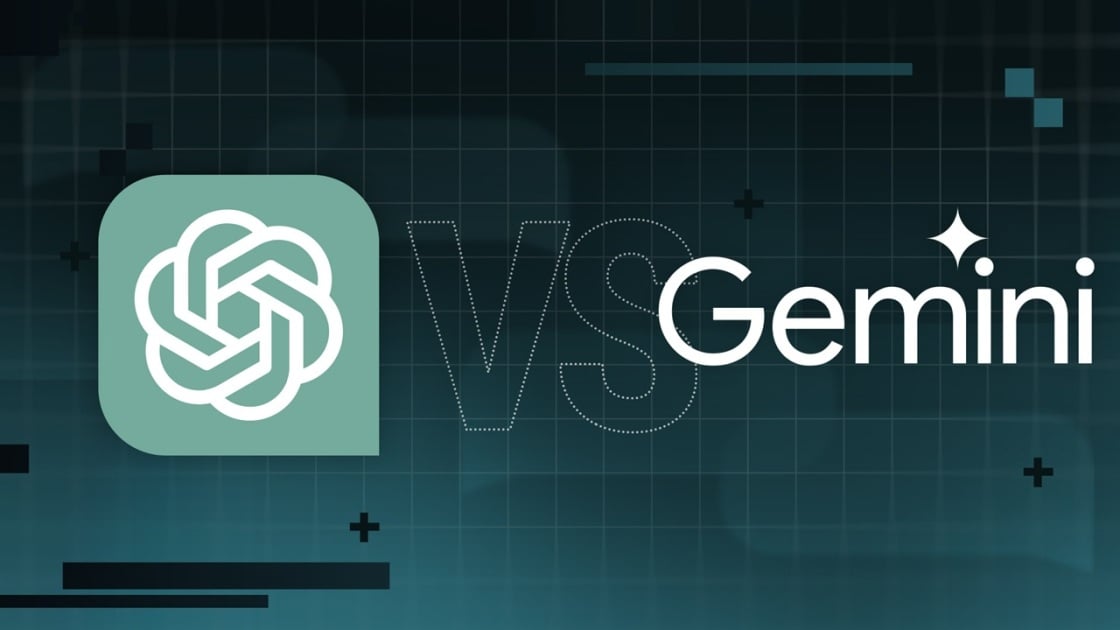
Precio
ChatGPT y Gemini tienen versiones gratuitas que limitan su acceso a características y modelos. Los planes premium para ambos también comienzan en alrededor de $ 20 por mes. Las características de chatbot, como investigaciones profundas, generación de imágenes y videos, búsqueda web y más, son similares en ChatGPT y Gemini. Sin embargo, los planes de Gemini pagados también incluyen el almacenamiento en la nube de Google Drive (a partir de 2TB) y un conjunto robusto de integraciones en las aplicaciones de Google Workspace.
Los niveles de más alta gama de ChatGPT y Gemini desbloquean el aumento de los límites de uso y algunas características únicas, pero el costo mensual prohibitivo de estos planes (como $ 200 para Chatgpt Pro o $ 250 para Gemini Ai Ultra) los pone fuera del alcance de la mayoría de las personas. Las características específicas del plan Pro de ChatGPT, como el modo O1 Pro que aprovecha el poder de cálculo adicional para preguntas particularmente complicadas, no son especialmente relevantes para el consumidor promedio, por lo que no sentirá que se está perdiendo. Sin embargo, es probable que desee las características que son exclusivas del plan Ai Ultra de Gemini, como la generación de videos VEO 3.
Ganador: Géminis
Plataformas
Puede acceder a ChatGPT y Gemini en la web o a través de aplicaciones móviles (Android e iOS). ChatGPT también tiene aplicaciones de escritorio (macOS y Windows) y una extensión oficial para Google Chrome. Gemini no tiene aplicaciones de escritorio dedicadas o una extensión de Chrome, aunque se integra directamente con el navegador.
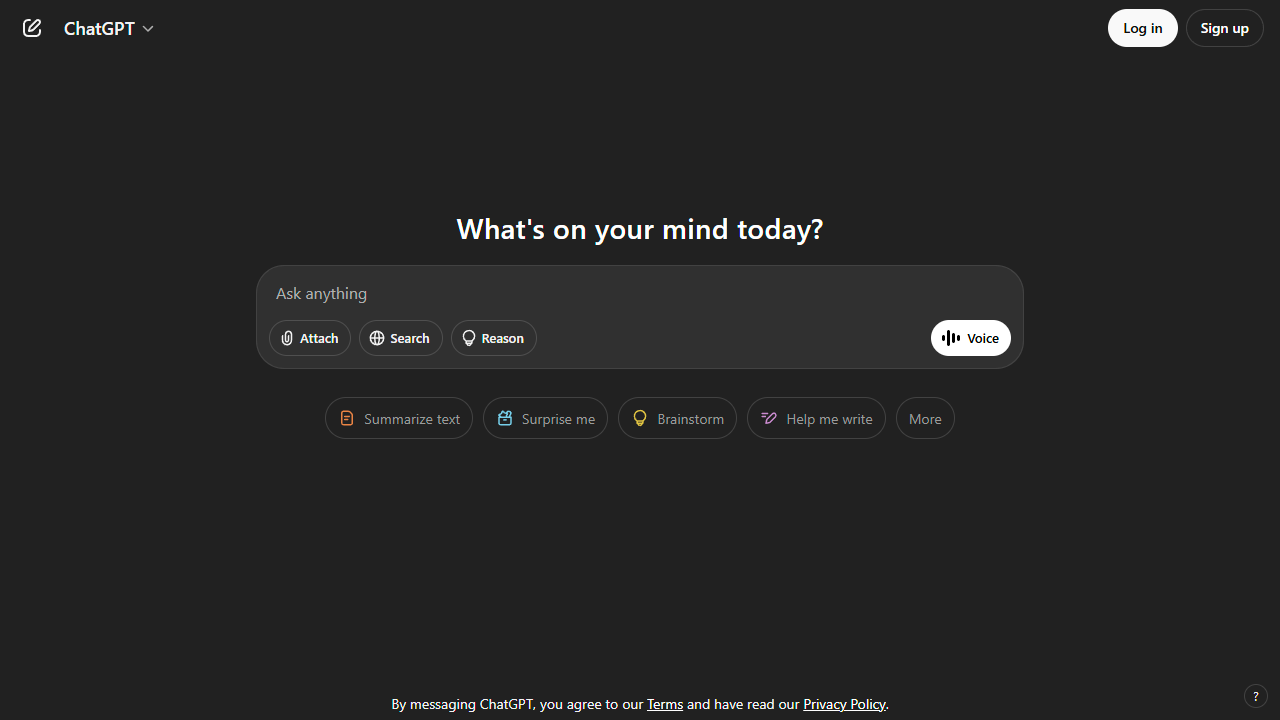
(Crédito: OpenAI/PCMAG)
Chatgpt está disponible en otros lugares, Como a través de Siri. Como se mencionó, puede acceder a Gemini en las aplicaciones de Google, como el calendario, Documento, ConducirGmail, Mapas, Mantener, FotosSábanas, y Música de YouTube. Tanto los modelos de Chatgpt como Gemini también aparecen en sitios como la perplejidad. Sin embargo, obtiene la mayor cantidad de funciones de estos chatbots en sus aplicaciones y portales web dedicados.
Las interfaces de ambos chatbots son en gran medida consistentes en todas las plataformas. Son fáciles de usar y no lo abruman con opciones y alternar. ChatGPT tiene algunas configuraciones más para jugar, como la capacidad de ajustar su personalidad, mientras que la profunda interfaz de investigación de Gemini hace un mejor uso de los bienes inmuebles de pantalla.
Ganador: empate
Modelos de IA
ChatGPT tiene dos series primarias de modelos, la serie 4 (su línea de conversación, insignia) y la Serie O (su compleja línea de razonamiento). Gemini ofrece de manera similar una serie Flash de uso general y una serie Pro para tareas más complicadas.
Los últimos modelos de Chatgpt son O3 y O4-Mini, y los últimos de Gemini son 2.5 Flash y 2.5 Pro. Fuera de la codificación o la resolución de una ecuación, pasará la mayor parte de su tiempo usando los modelos de la serie 4-Series y Flash. A continuación, puede ver cómo funcionan estos modelos en una variedad de tareas. Qué modelo es mejor depende realmente de lo que quieras hacer.
Ganador: empate
Búsqueda web
ChatGPT y Gemini pueden buscar información actualizada en la web con facilidad. Sin embargo, ChatGPT presenta mosaicos de artículos en la parte inferior de sus respuestas para una lectura adicional, tiene un excelente abastecimiento que facilita la vinculación de reclamos con evidencia, incluye imágenes en las respuestas cuando es relevante y, a menudo, proporciona más detalles en respuesta. Gemini no muestra nombres de fuente y títulos de artículos completos, e incluye mosaicos e imágenes de artículos solo cuando usa el modo AI de Google. El abastecimiento en este modo es aún menos robusto; Google relega las fuentes a los caretes que se pueden hacer clic que no resaltan las partes relevantes de su respuesta.
Como parte de sus experiencias de búsqueda en la web, ChatGPT y Gemini pueden ayudarlo a comprar. Si solicita consejos de compra, ambos presentan mosaicos haciendo clic en enlaces a los minoristas. Sin embargo, Gemini generalmente sugiere mejores productos y tiene una característica única en la que puede cargar una imagen tuya para probar digitalmente la ropa antes de comprar.
Ganador: chatgpt
Investigación profunda
ChatGPT y Gemini pueden generar informes que tienen docenas de páginas e incluyen más de 50 fuentes sobre cualquier tema. La mayor diferencia entre los dos se reduce al abastecimiento. Gemini a menudo cita más fuentes que CHATGPT, pero maneja el abastecimiento en informes de investigación profunda de la misma manera que lo hace en la búsqueda en modo AI, lo que significa caretas que se puede hacer clic sin destacados en el texto. Debido a que es más difícil conectar las afirmaciones en los informes de Géminis a fuentes reales, es más difícil creerles. El abastecimiento claro de ChatGPT con destacados en el texto es más fácil de confiar. Sin embargo, Gemini tiene algunas características de calidad de vida en ChatGPT, como la capacidad de exportar informes formateados correctamente a Google Docs con un solo clic. Su tono también es diferente. Los informes de ChatGPT se leen como publicaciones de foro elaboradas, mientras que los informes de Gemini se leen como documentos académicos.
Ganador: chatgpt
Generación de imágenes
La generación de imágenes de ChatGPT impresiona independientemente de lo que solicite, incluso las indicaciones complejas para paneles o diagramas cómicos. No es perfecto, pero los errores y la distorsión son mínimos. Gemini genera imágenes visualmente atractivas más rápido que ChatGPT, pero rutinariamente incluyen errores y distorsión notables. Con indicaciones complicadas, especialmente diagramas, Gemini produjo resultados sin sentido en las pruebas.
Arriba, puede ver cómo ChatGPT (primera diapositiva) y Géminis (segunda diapositiva) les fue con el siguiente mensaje: “Genere una imagen de un estudio de moda con una decoración simple y rústica que contrasta con el espacio más agradable. Incluya un sofá marrón y paredes de ladrillo”. La imagen de ChatGPT limita los problemas al detalle fino en las hojas de sus plantas y texto en su libro, mientras que la imagen de Gemini muestra problemas más notables en su tubo de cordón y lámpara.
Ganador: chatgpt
¡Obtenga nuestras mejores historias!
Toda la última tecnología, probada por nuestros expertos
Regístrese en el boletín de informes de laboratorio para recibir las últimas revisiones de productos de PCMAG, comprar asesoramiento e ideas.
Al hacer clic en Registrarme, confirma que tiene más de 16 años y acepta nuestros Términos de uso y Política de privacidad.
¡Gracias por registrarse!
Su suscripción ha sido confirmada. ¡Esté atento a su bandeja de entrada!
Generación de videos
La generación de videos de Gemini es la mejor de su clase, especialmente porque ChatGPT no puede igualar su capacidad para producir audio acompañante. Actualmente, Google bloquea el último modelo de generación de videos de Gemini, VEO 3, detrás del costoso plan AI Ultra, pero obtienes más videos realistas que con ChatGPT. Gemini también tiene otras características que ChatGPT no, como la herramienta Flow Filmmaker, que le permite extender los clips generados y el animador AI Whisk, que le permite animar imágenes fijas. Sin embargo, tenga en cuenta que incluso con VEO 3, aún necesita generar videos varias veces para obtener un gran resultado.
En el ejemplo anterior, solicité a ChatGPT y Gemini a mostrarme un solucionador de cubos de Rubik Rubik que resuelva un cubo. La persona en el video de Géminis se ve muy bien, y el audio acompañante es competente. Al final, hay una buena atención al detalle con el marco que se desplaza, simulando la detención de una grabación de selfies. Mientras tanto, Chatgpt luchó con su cubo, distorsionándolo en gran medida.
Ganador: Géminis
Procesamiento de archivos
Comprender los archivos es una fortaleza de ChatGPT y Gemini. Ya sea que desee que respondan preguntas sobre un manual, editen un currículum o le informen algo sobre una imagen, ninguno decepciona. Sin embargo, ChatGPT tiene la ventaja sobre Gemini, ya que ofrece un reconocimiento de imagen ligeramente mejor y respuestas más detalladas cuando pregunta sobre los archivos cargados. Ambos chatbots todavía a veces inventan citas de documentos proporcionados o malinterpretan las imágenes, así que asegúrese de verificar sus resultados.
Ganador: chatgpt
Escritura creativa
Chatgpt y Gemini pueden generar poemas, obras, historias y más competentes. CHATGPT, sin embargo, se destaca entre los dos debido a cuán únicas son sus respuestas y qué tan bien responde a las indicaciones. Las respuestas de Gemini pueden sentirse repetitivas si no calibra cuidadosamente sus solicitudes, y no siempre sigue todas las instrucciones a la carta.
En el ejemplo anterior, solicité ChatGPT (primera diapositiva) y Gemini (segunda diapositiva) con lo siguiente: “Sin hacer referencia a nada en su memoria o respuestas anteriores, quiero que me escriba un poema de verso gratuito. Preste atención especial a la capitalización, enjambment, ruptura de línea y puntuación. Dado que es un verso libre, no quiero un medidor familiar o un esquema de retiro de la rima, pero quiero que tenga un estilo de coohes. ChatGPT logró entregar lo que pedí en el aviso, y eso era distinto de las generaciones anteriores. Gemini tuvo problemas para generar un poema que incorporó cualquier cosa más allá de las comas y los períodos, y su poema anterior se lee de manera muy similar a un poema que generó antes.
Recomendado por nuestros editores
Ganador: chatgpt
Razonamiento complejo
Los modelos de razonamiento complejos de Chatgpt y Gemini pueden manejar preguntas de informática, matemáticas y física con facilidad, así como mostrar de manera competente su trabajo. En las pruebas, ChatGPT dio respuestas correctas un poco más a menudo que Gemini, pero su rendimiento es bastante similar. Ambos chatbots pueden y le darán respuestas incorrectas, por lo que verificar su trabajo aún es vital si está haciendo algo importante o tratando de aprender un concepto.
Ganador: chatgpt
Integración
ChatGPT no tiene integraciones significativas, mientras que las integraciones de Gemini son una característica definitoria. Ya sea que desee obtener ayuda para editar un ensayo en Google Docs, comparta una pestaña Chrome para hacer una pregunta, pruebe una nueva lista de reproducción de música de YouTube personalizada para su gusto o desbloquee ideas personales en Gmail, Gemini puede hacer todo y mucho más. Es difícil subestimar cuán integrales y poderosas son realmente las integraciones de Géminis.
Ganador: Géminis
Asistentes de IA
ChatGPT tiene GPT personalizados, y Gemini tiene gemas. Ambos son asistentes de IA personalizables. Tampoco es una gran actualización sobre hablar directamente con los chatbots, pero los GPT personalizados de terceros agregan una nueva funcionalidad, como el fácil acceso a Canva para editar imágenes generadas. Mientras tanto, terceros no pueden crear gemas, y no puedes compartirlas. Puede permitir que los GPT personalizados accedan a la información externa o tomen acciones externas, pero las GEM no tienen una funcionalidad similar.
Ganador: chatgpt
Contexto Windows y límites de uso
La ventana de contexto de ChatGPT sube a 128,000 tokens en sus planes de nivel superior, y todos los planes tienen límites de uso dinámicos basados en la carga del servidor. Géminis, por otro lado, tiene una ventana de contexto de 1,000,000 token. Google no está demasiado claro en los límites de uso exactos para Gemini, pero también son dinámicos dependiendo de la carga del servidor. Anecdóticamente, no pude alcanzar los límites de uso usando los planes pagados de Chatgpt o Gemini, pero es mucho más fácil hacerlo con los planes gratuitos.
Ganador: Géminis
Privacidad
La privacidad en Chatgpt y Gemini es una bolsa mixta. Ambos recopilan cantidades significativas de datos, incluidos todos sus chats, y usan esos datos para capacitar a sus modelos de IA de forma predeterminada. Sin embargo, ambos le dan la opción de apagar el entrenamiento. Google al menos no recopila y usa datos de Gemini para fines de capacitación en aplicaciones de espacio de trabajo, como Gmail, de forma predeterminada. ChatGPT y Gemini también prometen no vender sus datos o usarlos para la orientación de anuncios, pero Google y OpenAI tienen historias sórdidas cuando se trata de hacks, filtraciones y diversos fechorías digitales, por lo que recomiendo no compartir nada demasiado sensible.
Ganador: empate
-

 Startups2 años ago
Startups2 años agoRemove.bg: La Revolución en la Edición de Imágenes que Debes Conocer
-

 Tutoriales2 años ago
Tutoriales2 años agoCómo Comenzar a Utilizar ChatGPT: Una Guía Completa para Principiantes
-

 Startups1 año ago
Startups1 año agoStartups de IA en EE.UU. que han recaudado más de $100M en 2024
-
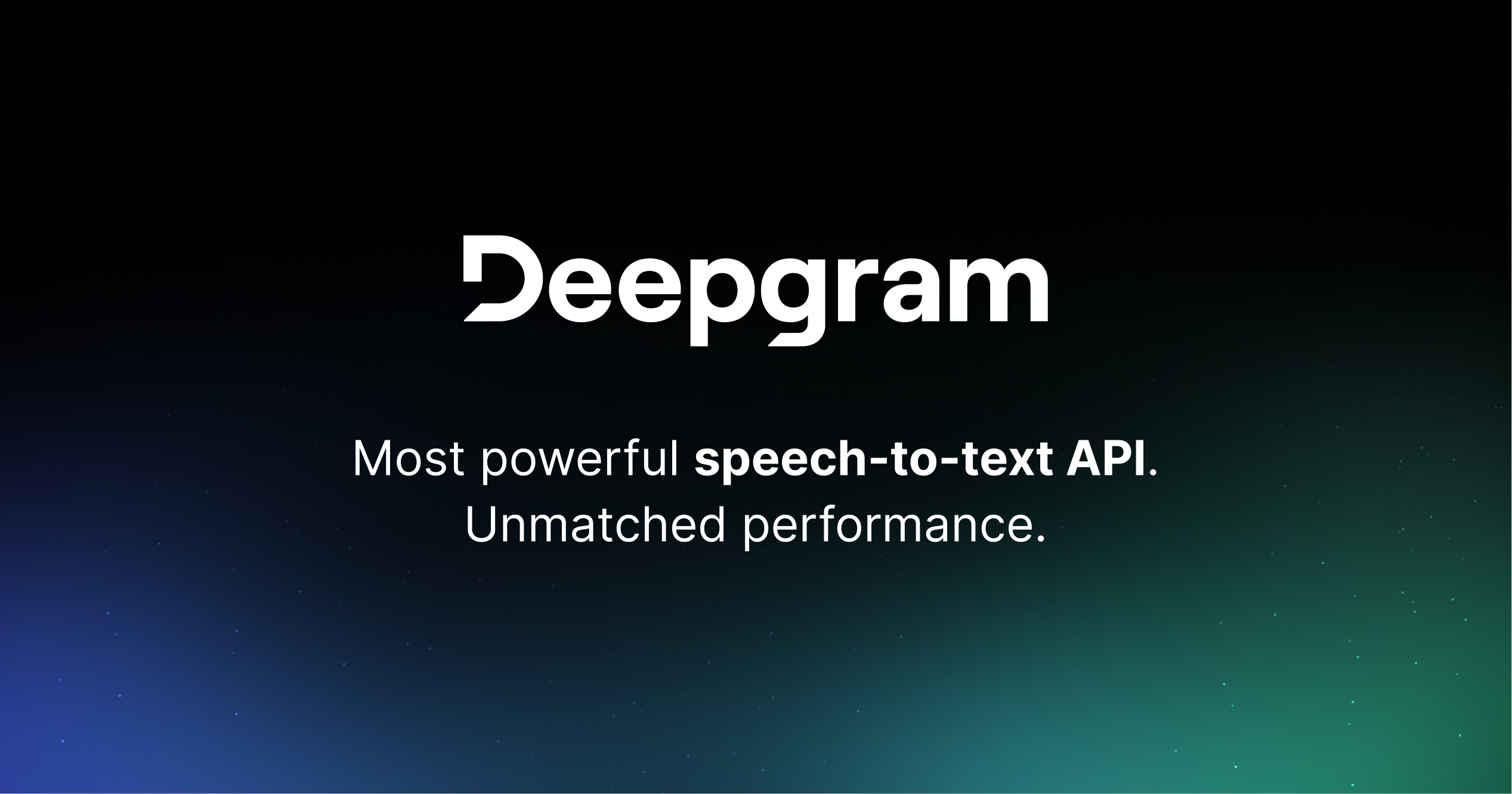
 Startups2 años ago
Startups2 años agoDeepgram: Revolucionando el Reconocimiento de Voz con IA
-

 Recursos2 años ago
Recursos2 años agoCómo Empezar con Popai.pro: Tu Espacio Personal de IA – Guía Completa, Instalación, Versiones y Precios
-

 Recursos2 años ago
Recursos2 años agoPerplexity aplicado al Marketing Digital y Estrategias SEO
-

 Estudiar IA2 años ago
Estudiar IA2 años agoCurso de Inteligencia Artificial de UC Berkeley estratégico para negocios
-
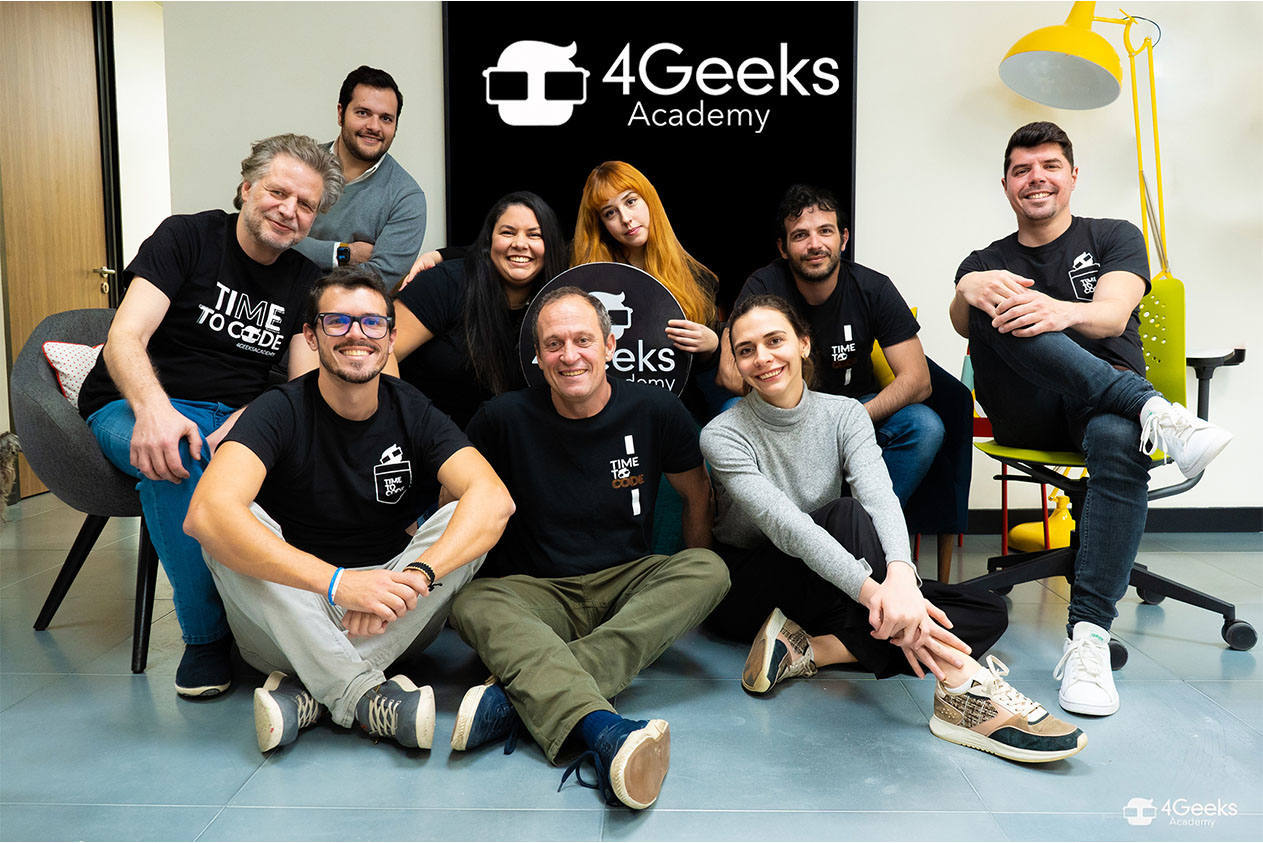
 Estudiar IA2 años ago
Estudiar IA2 años agoCurso de Inteligencia Artificial Aplicada de 4Geeks Academy 2024


































